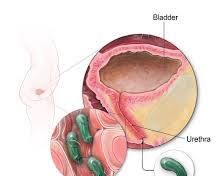Infectious Diseases
Infectious diseases are a diverse group of illnesses caused by pathogenic microorganisms, such as bacteria, viruses, fungi, and parasites. These microorganisms can spread from one person to another through various routes, including:
- Direct contact: This can occur through skin-to-skin contact, sexual contact, or contact with respiratory secretions (e.g., coughing, sneezing).
- Indirect contact: This can occur through contact with contaminated surfaces or objects, or by ingesting contaminated food or water.
- Vectors: This can occur through the bites of insects or other animals that carry the infectious agent.
Common examples of infectious diseases include:
- Viral diseases: Influenza (flu), COVID-19, HIV/AIDS, common cold, measles, mumps, rubella, hepatitis, mononucleosis, warts, chickenpox, and shingles.
Fungal diseases: Athlete’s foot, ringworm, yeast infections, and candidiasis.
Parasitic diseases: Malaria, schistosomiasis, hookworm, tapeworm, and pinworm.
- Fever
- Fatigue
- Coughing
- Sneezing
- Shortness of breath
- Muscle aches
- Nausea and vomiting
- Diarrhea
- Skin rash
The severity of infectious diseases can also vary greatly. Some infections are mild and resolve on their own, while others can be serious and even life-threatening.
Here are some general tips for preventing infectious diseases:
Wash your hands frequently with soap and water.
Avoid close contact with people who are sick.
Get vaccinated according to the recommended schedule.
Practice safe sex.
Avoid sharing personal items, such as towels and cups.
Cook food properly.
Drink clean water.
Avoid contact with animals that may be carrying disease.
By taking these preventive measures, you can help protect yourself and others from infectious diseases.



